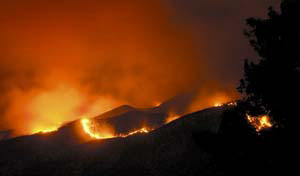
Carson Helicopters has been actively campaigning, challenging the National Transportation Safety Board’s conclusions about the cause of the crash of one of their helicopters in which nine wildland firefighters and pilots died. In 2008 a Carson Sikorsky S-61N crashed on the Iron Complex fire near Weaverville, California. The NTSB, after a 2-year investigation, said on December 7, 2010, that the causes were:
1. Carson’s intentional understatement of the helicopter’s empty weight;
2. The alteration by Carson of the power available chart to exaggerate the helicopter’s lift capability;
3. Carson’s practice of using unapproved above-minimum specification torque in performance calculations that, collectively, resulted in the pilots’ relying on performance calculations that significantly overestimated the helicopter’s load-carrying capacity and did not provide an adequate performance margin for a successful takeoff; and insufficient oversight by the U.S. Forest Service and the Federal Aviation Administration.
Shortly after the NTSB’s report was released in December, Carson surrendered their FAA Certificate, which is equivalent to an operating license. In addition, the NTSB notified the Department of Transportation’s Inspector General that Carson’s actions may merit a criminal investigation.
Carson has a potential motive to attempt to lay blame for the fatal crash on something other than themselves. They could be trying to save their company from bankruptcy while also trying to avoid being found guilty of possible criminal charges.
Vertical Magazine, a publication that covers news and issues related to helicopters, published a lengthy article on January 26 covering Carson’s recent efforts to change the public perception of the cause of the crash. Here is an excerpt from their article.
Key Areas of Dispute
In response to the NTSB’s December 2010 accident report, Carson wrote a strongly worded letter to the helicopter industry (obtained by Vertical Magazine on Jan. 11, 2011) stating his displeasure with the NTSB and his unwillingness to remain quiet any longer, since he realized his “faith in a fair and impartial investigation had been ill-founded.”
In the six-page letter, Carson accused the NTSB of performing an “arbitrary and one-sided hearing” and shared facts that he claimed were “purposely excluded in the summary of findings.”
He then went on to accuse the NTSB of a number of actions that led to what he believes are false conclusions.
The entire article is HERE.




